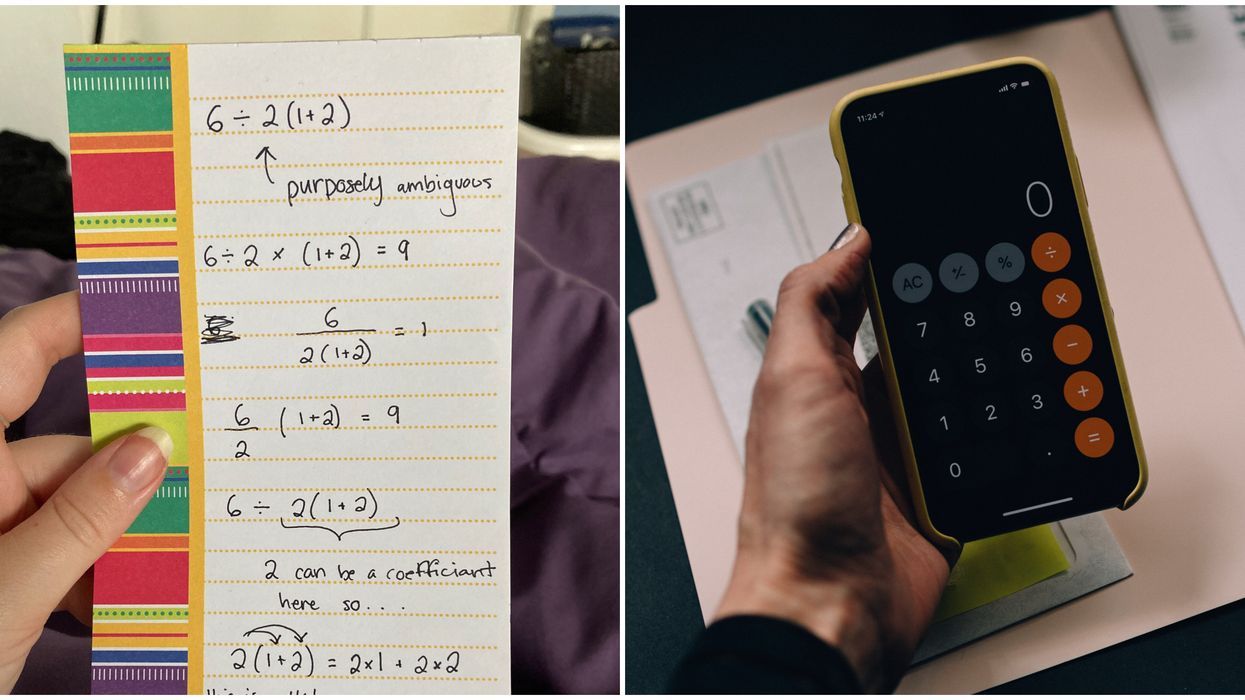BEDMAS Is Trending On Twitter In Canada Because Of A Viral Math Problem
With that BEDMAS problem trending on Twitter in Canada because of a viral tweet, people are debating how to find the correct answer and what that correct answer is.
If you haven't seen it already, this is the viral math problem that has people fighting on Twitter: 6 ÷ 2(1+2).
Some people have said that the answer to that equation is one while others are adamant that it's nine.
Editor's Choice: Ontario Is About To Get Hit With Another 20 cm Of Snow & Super Strong Winds
The question is viral because it's ambiguous.
Natalie Keith
Narcity spoke with Natalie Keith, a certified math teacher in Ontario, about this tricky equation.
"The question is viral because it's ambiguous," Keith said.
She noted that regardless of whether people use BEDMAS or PEMDAS, division and multiplication should be completed in the order that they appear.
"In higher-level math, we don't use division signs. We write division as fractions," Keith said. "In lower-level math, you wouldn't necessarily show two as a coefficient."
She said that if the equation is written as 6 ÷ 2 x (1+2), the answer would be nine but if it's expressed entirely as a fraction, the answer would be one.
However, it can also equal nine if 6 ÷ 2 is a fraction but (1+2) isn't.
When two is used as a coefficient, both the one and the two inside the bracket would get multiplied by that number. So, 6 ÷ 2(1+2) would become 6 ÷ (2+4) and then 6 ÷ 6 which equals one.
This math problem and other ones that feature division, multiplication and addition have made the rounds on Twitter in previous years.
People were just as divided then as they are now, no pun intended!

